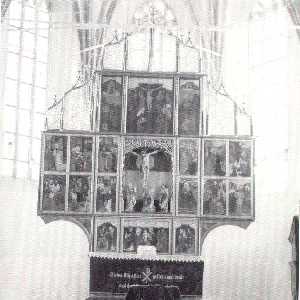
|
Bearing the print above all of the mediaeval fortresses, the art of stronghold building - as far as towns are concerned - was then transferred to fortress churches: the walls were raised, with an open sentry road and reinforced by a row of entrenched towers. The gate was reinforced on the outside with supplementary entrenchments. Often a second or third precinct was built. The oldest fortress churches dating from those ages can be found in Tara Birsei region. The churches built in plains were reinforced as they used to be protected only up to the west tower. The most important entrenched church in Transylvania is the Prejmer one. This cross-shaped building , dating from the early Gothic, was influenced by the Kerz Cistercian construction site; it was surrounded by 12 metre high walls. These walls have a square round angle layout and are protected by stockades, water ditches, four towers and two advanced reinforcements. Within this area, the constructions supported by the precinct wall had three or four storeys; divided into 60 compartments, they had basements and 260 store houses. |
The church preserved its furniture dating from the end of the Gothic age, including a complex altar. One can still notice the frescoes dating fron the 16th century, on the southern tower of the inner precinct wall, as well as the tomb stones of several Saxon bishops. Since 1993 this fortress church, as well as the access paths around it, is on the world heritage list drawn up by UNESCO. In the times when the Biertan chorus was reinforced, the religious buildings continued to be entrenched all over the place. A wide range of defence means and architectural grandeur were put to good use for raising the west tower and endowing it with three entrenched storeys. There is a second tower under the chorus or a side entrance. |
